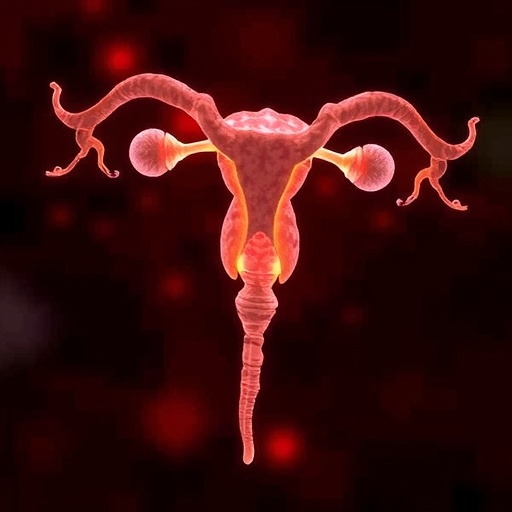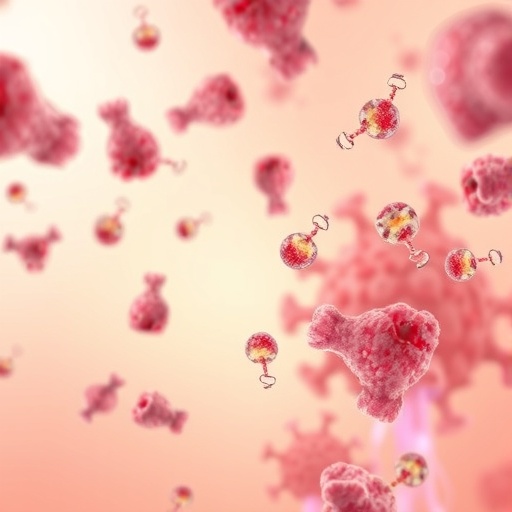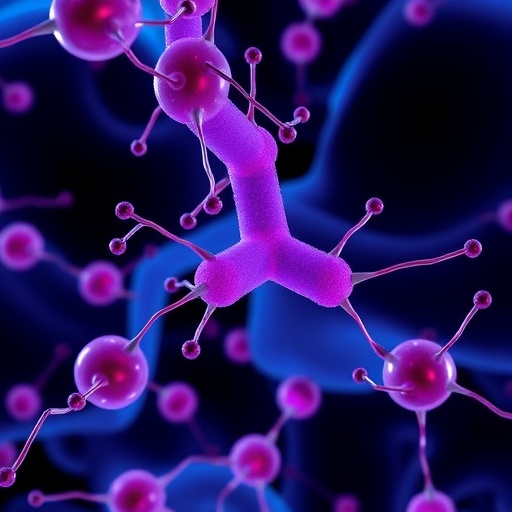Recent scientific investigations have illuminated the therapeutic potential of selenium nanoparticles to alleviate the impact of cyclophosphamide-induced premature ovarian failure (POF) in experimental models, particularly in mice. This groundbreaking research conducted by Liu et al. and published in the Journal of Ovarian Research reveals significant insights into the underlying mechanisms that contribute to ovarian preservation amid chemical-induced challenges. The study calls for a deeper understanding of how selenium nanoparticles possess the ability to modulate critical cellular pathways associated with reproductive health.
Cyclophosphamide, a chemotherapy drug often used in cancer treatment, is notorious for its detrimental effects on ovarian function, particularly in young women. The mechanism of action involves oxidative stress and subsequent cellular damage, leading to a decline in follicular reserve and hormonal disruptions that may result in infertility. By creating an experimental model that mimics these conditions, researchers have provided a platform to test the efficacy of innovative therapies such as selenium nanoparticles, which are garnering attention for their antioxidant properties.
In the current study, Liu and colleagues focused on administering selenium nanoparticles to mice subjected to cyclophosphamide treatment. The results were promising, demonstrating that selenium nanoparticles not only mitigated ovarian damage but also contributed to the maintenance of hormonal balance. This presents a crucial step towards developing strategies that could potentially preserve ovarian function during cancer treatments.
The underlying mechanisms by which selenium nanoparticles exert their protective effects can be traced back to their interaction with vital signaling pathways. Specifically, the study indicated that these nanoparticles activate the PI3K/AKT signaling pathway. This pathway is crucial for cellular survival and function, particularly within the ovarian tissue, as it helps regulate cellular growth, proliferation, and apoptosis. When activated, the PI3K/AKT pathway can offer a protective shield against the deleterious effects of oxidative stress.
Moreover, the study highlights the role of ferroptosis, a uniquely regulated form of cell death that is distinct from both apoptosis and necrosis, which has garnered substantial interest in cancer research. Ferroptosis is characterized by the accumulation of lipid peroxides and is also linked to reproductive health parameters. By inhibiting ferroptosis, selenium nanoparticles present a dual-action modality that not only prevents cell death but also promotes cellular resilience and functionality.
The research conducted by Liu et al. raises critical questions about the potential clinical applications of selenium nanoparticles in oncology and reproductive medicine. As the study progresses toward potential human application, one can envision a future where patients undergoing chemotherapy benefit from adjunct therapies that not only combat cancer but also protect fertility. This would be a significant advancement in holistic patient care, particularly for younger female patients who must consider the implications of cancer treatment on their reproductive future.
Additionally, the method of delivering selenium nanoparticles poses intriguing discussions in the scientific community. The bioavailability and targeted delivery of nanoparticles to specific tissues without causing systemic side effects remains a challenge. However, the promising findings from this research pave the way for further exploration into optimized delivery systems that maximize the therapeutic benefits of selenium in ovarian preservation.
These findings align with a growing body of research that advocates for the use of nanotechnology in medicine, especially in addressing complex biological challenges, including the management of chemotherapy-induced toxicities. As scientists continue to unravel the complexities of nanoparticle interactions within biological systems, a new frontier emerges for cancer treatment protocols that prioritize not only survival but also the overall quality of life.
In an era where personalized medicine is on the rise, understanding individual patient responses to treatments such as those involving selenium nanoparticles could lead to significant advancements. Future clinical trials will be essential in determining the efficacy, safety, and dosing protocols for selenium nanoparticles in human subjects. With these strides, we may soon witness a paradigm shift in the management of chemotherapy-related side effects, particularly in females contemplating the preservation of reproductive health.
Beyond the immediate implications of this research, it opens a dialogue about the broader roles of micronutrients and dietary supplements in cancer care. The integration of selenium into treatment regimens as a protective measure against the side effects of traditional therapies could prompt significant changes in guidelines for supportive cancer care.
Overall, the study conducted by Liu and colleagues offers hope to countless individuals facing the daunting side effects of chemotherapy and fertilization challenges. The promise of selenium nanoparticles as a safeguarding agent against premature ovarian failure could pave the way for innovative interventions that promote not only cancer survival but also preserve the inherent biological functions that allow for future family planning.
The increasing awareness and ongoing investigations into the intersection of oncology and reproductive health signify a vital turning point. As scientists continue to investigate these nano-sized power players in the treatment landscape, we are propelled forward into a future where cancer therapies can be optimized to spare vital functions essential for women’s health. This continuous research journey holds the potential to cultivate life beyond cancer, allowing women to thrive in both health and motherhood.
In conclusion, the emerging narrative surrounding selenium nanoparticles underscores the importance of pursuing multi-faceted approaches to disease treatment. The intricate dance between cellular signaling, oxidative stress mitigation, and innovative therapeutic modalities will undoubtedly shape future paradigms in medicine, ultimately striving toward comprehensive patient care that encompasses both recovery and reproductive autonomy.
Subject of Research: Selenium nanoparticles and their effects on cyclophosphamide-induced premature ovarian failure in mice.
Article Title: Selenium nanoparticles mitigate Cyclophosphamide-Induced premature ovarian failures in mice by activating PI3K/AKT signaling pathway and inhibiting ferroptosis.
Article References: Liu, G., Dai, L., Zhang, R. et al. Selenium nanoparticles mitigate Cyclophosphamide-Induced premature ovarian failures in mice by activating PI3K/AKT signaling pathway and inhibiting ferroptosis. J Ovarian Res 18, 257 (2025). https://doi.org/10.1186/s13048-025-01825-w
Image Credits: AI Generated
DOI: https://doi.org/10.1186/s13048-025-01825-w
Keywords: Selenium nanoparticles, premature ovarian failure, cyclophosphamide, PI3K/AKT signaling pathway, ferroptosis.
Tags: antioxidant properties of seleniumcellular pathways in ovarian preservationchemotherapy effects on ovarian functioncyclophosphamide-induced ovarian damageexperimental models for reproductive researchhormonal balance and fertilityinnovative therapies for infertilityoxidative stress and ovarian healthpremature ovarian failure in miceprotective effects of selenium in womenselenium nanoparticles in reproductive healththerapeutic potential of nanoparticles in medicine





